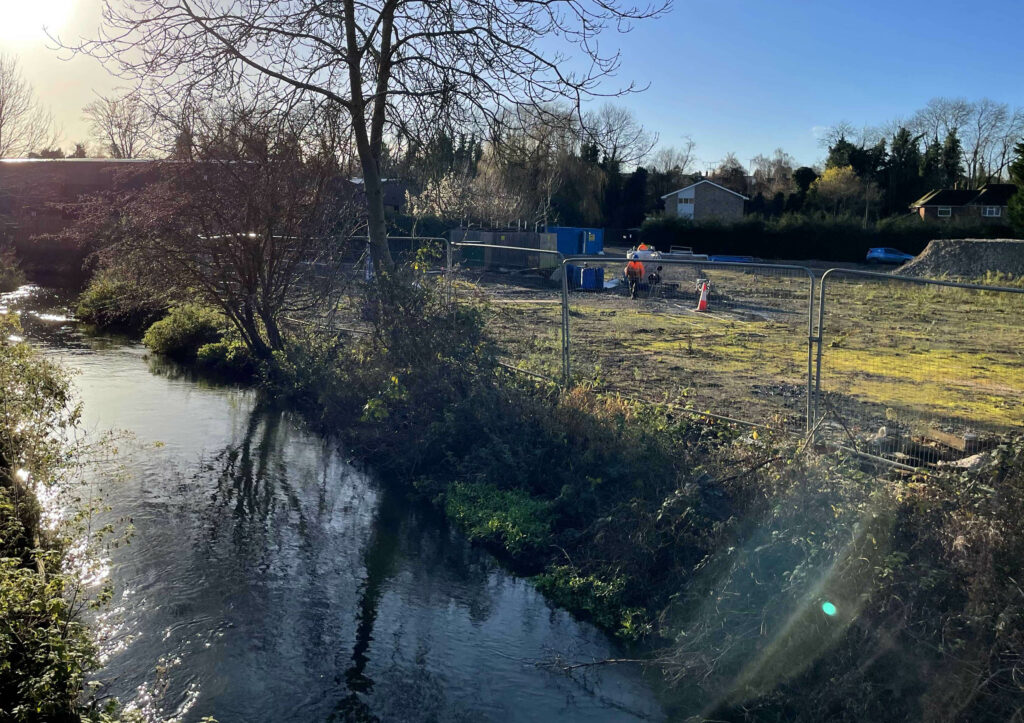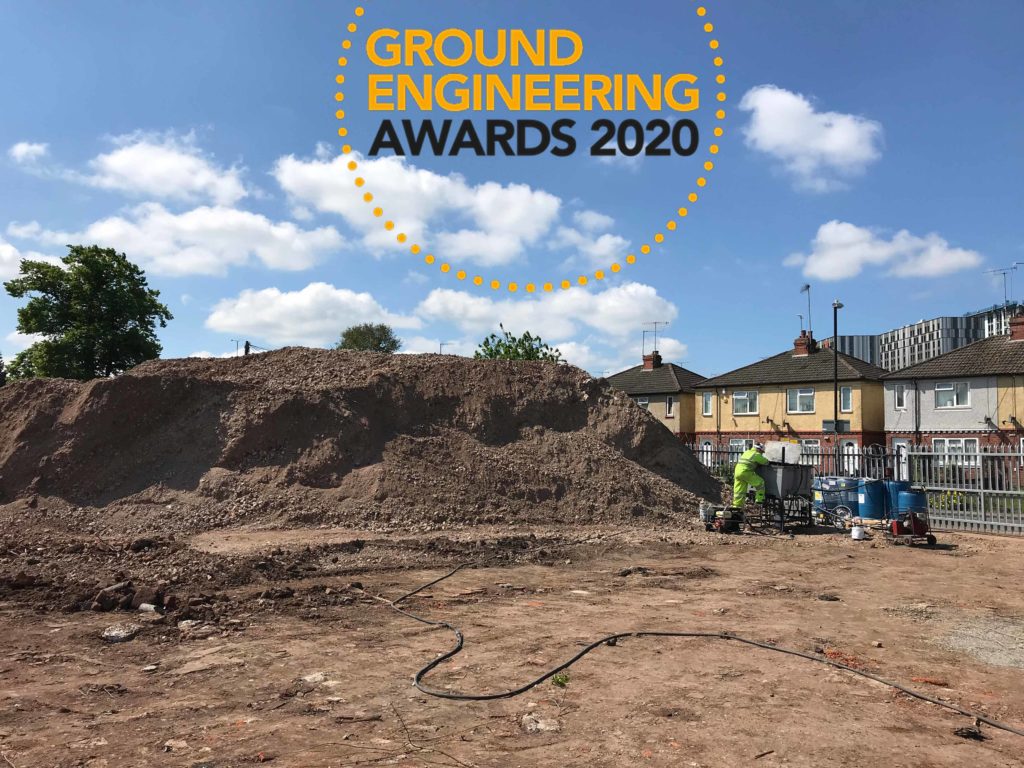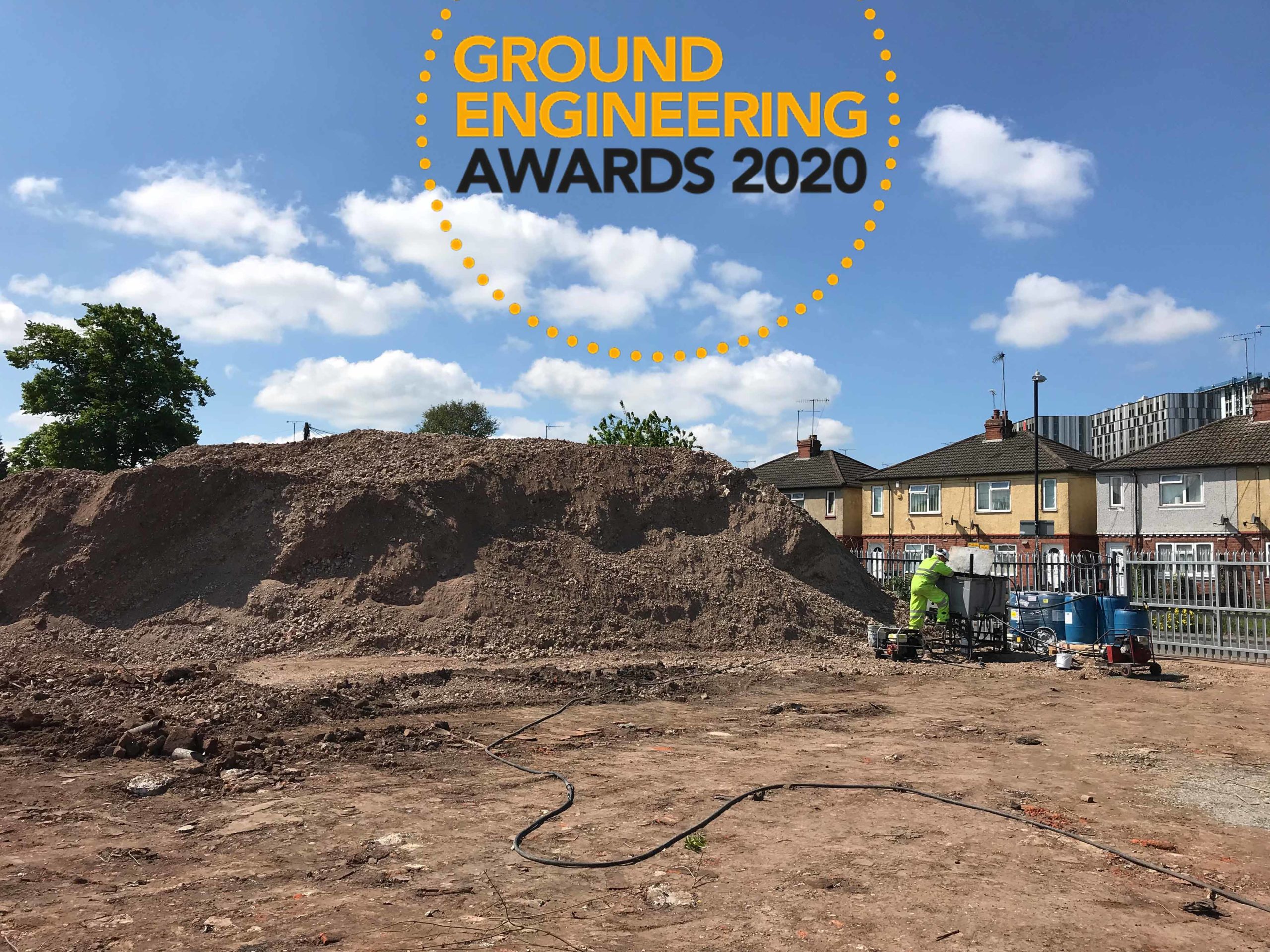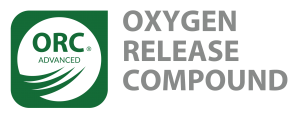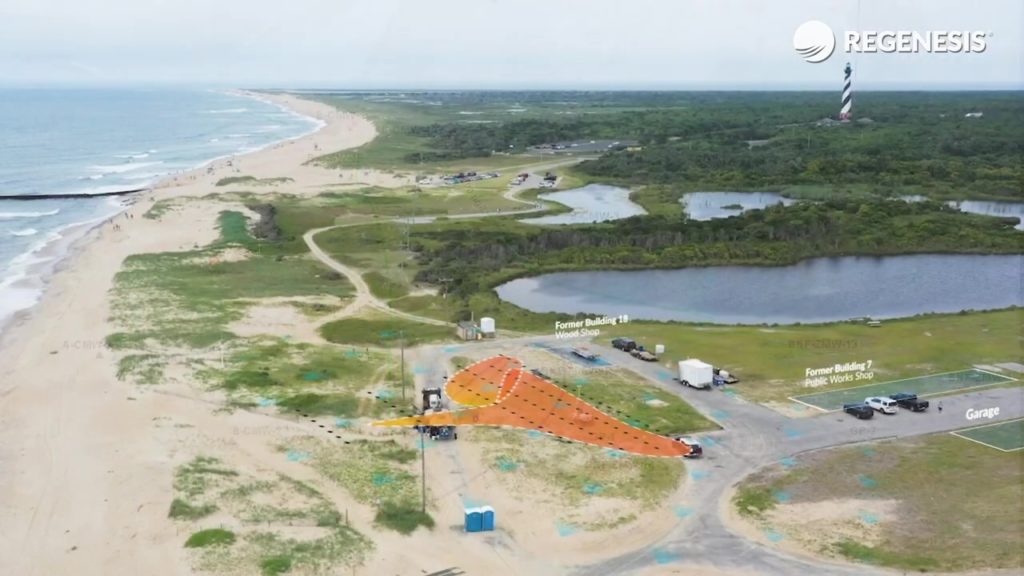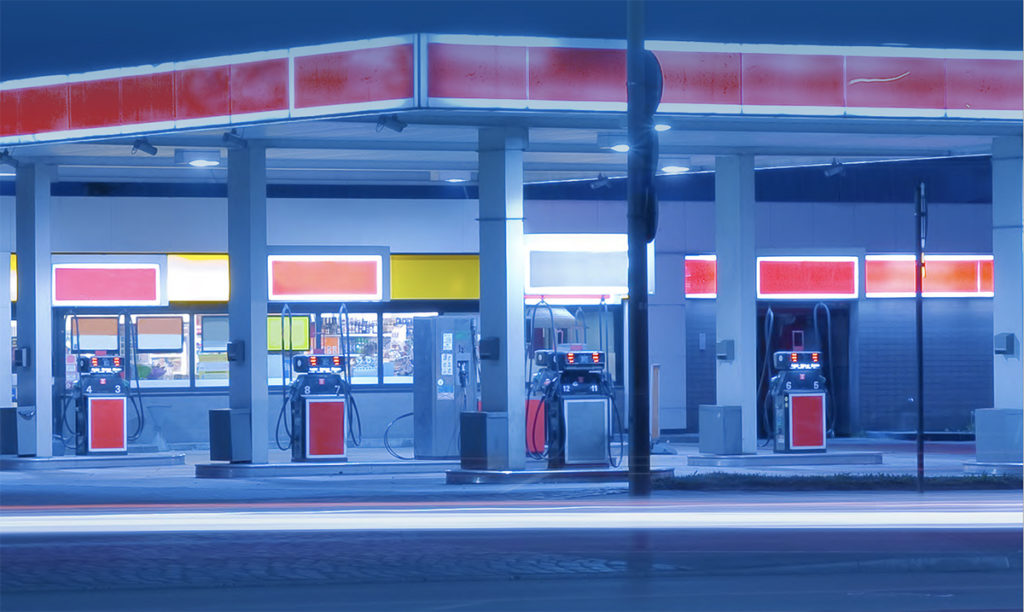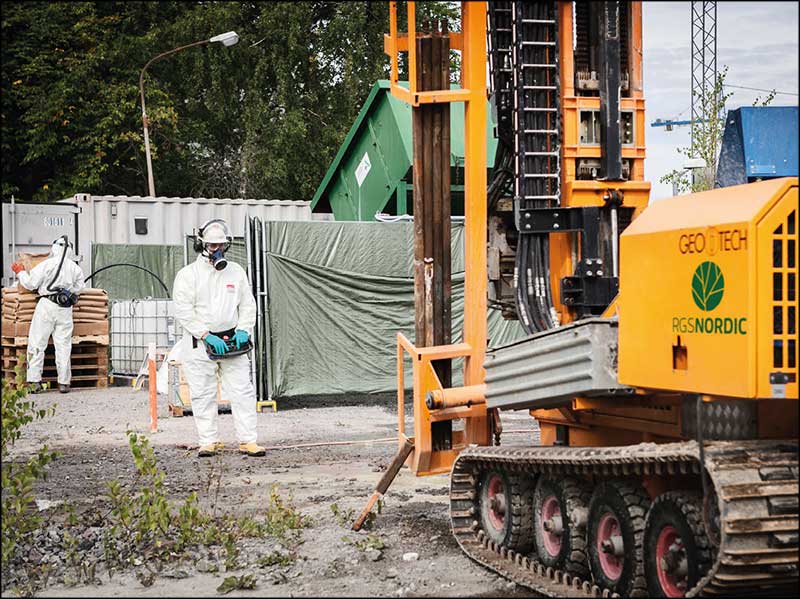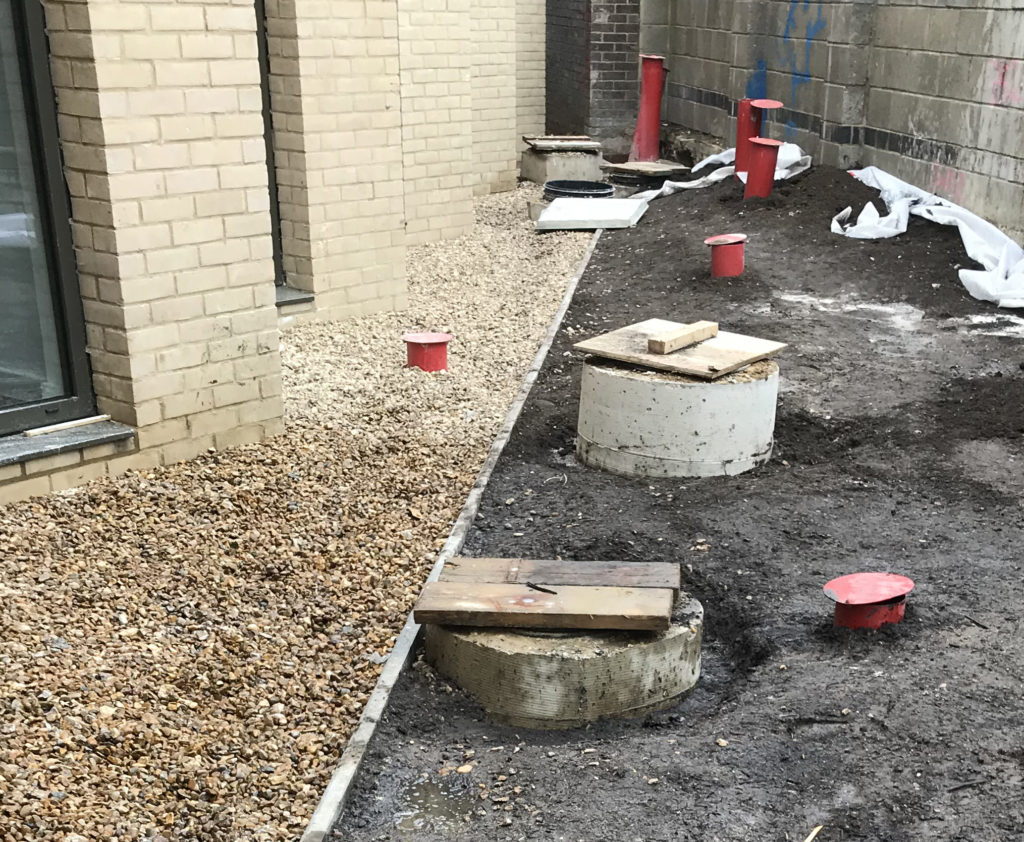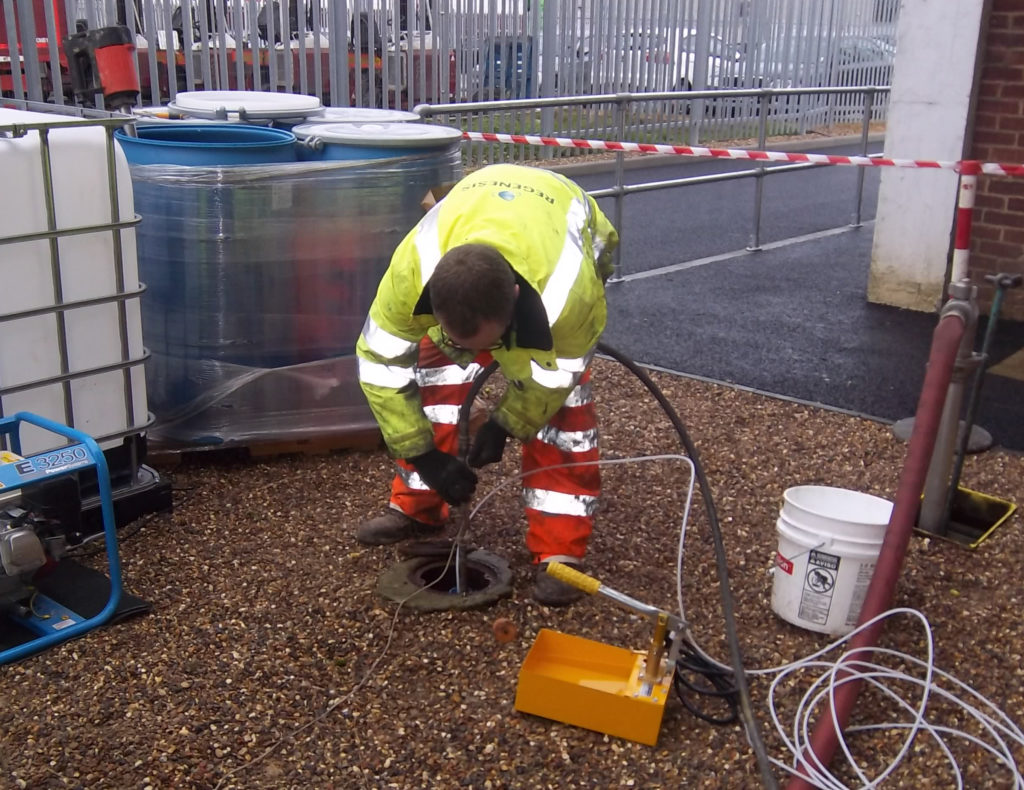Effective In-Situ Treatment of a 1km PCE Plume in Finland
Case study highlights:
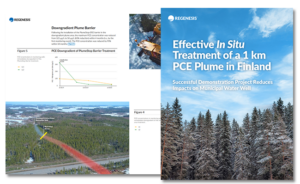 In Eastern Finland, a fast-moving PCE (perchloroethene) plume beneath a metal-processing facility was remediated to reduce impacts on a municipal drinking water source.
In Eastern Finland, a fast-moving PCE (perchloroethene) plume beneath a metal-processing facility was remediated to reduce impacts on a municipal drinking water source.
- PCE concentrations were reduced to below the drinking water limit at the municipal water supply well (concentration reductions of approximately 80% in the plume within months and 90 to 95% by 18 months)
- Results indicate that the combined treatment approach can be successfully applied in cold groundwater aquifers with low organic carbon content
- Integrated source area grid treatment (ERD) and plume barrier treatment (PlumeStop®) is an effective strategy for treating elongated chlorinated solvent plumes
Protection of a chalk stream using an injected permeable reactive barrier
Integrated remediation of petroleum hydrocarbons in soils and groundwater
At a brownfield redevelopment site in Hertfordshire, UK, petroleum hydrocarbon contamination originating from historic fuel storage tanks leaks, required remediation to protect the adjacent sensitive and protected chalk stream.
Working with the Environmental Contractor Rake Remediation, REGENESIS helped devise an efficient and integrated remediation strategy, that has been delivered in two phases.
Read the case study
1m 28s reading time
-
Watch the project video
-
Explore treatment options for petroleum hydrocarbons
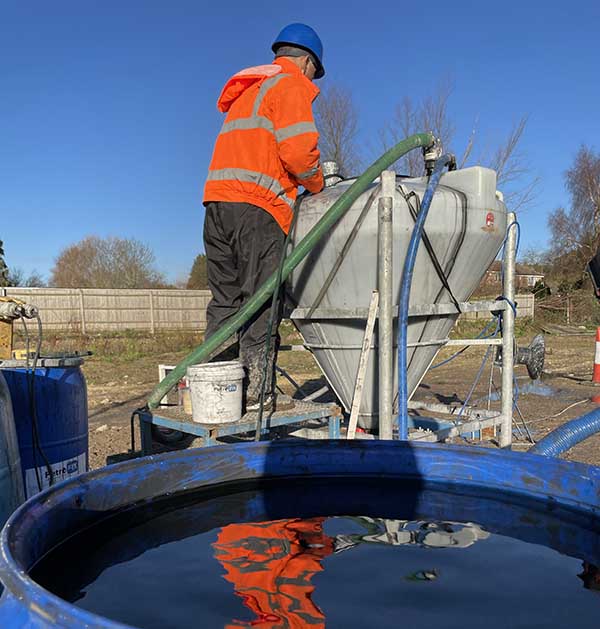
PetroFix in situ PRB replaces cut-off wall design to benefit redevelopment project
Remediation project wins ‘Brownfield Redevelopment Project of the Year’ in Ground Engineering Awards
At the site of a former storage and distribution depot in Coventry, the soils and groundwater were impacted with petroleum hydrocarbons from previous site usage, which included a petrol filling station that had been located just north of the site and also across part of the site itself. Cundall created a multi-phased remediation strategy with Alto Construct to deal with the soils and asked REGENESIS to carry out the groundwater remediation.
REGENESIS installed a PetroFix activated carbon permeable reactive barrier at the edge of the site to capture and promote the biological degradation of high levels of dissolved phase contamination migrating on-site, to protect the redevelopment site as well as the adjacent river.
Case study highlights
- 40m long in situ barrier installation completed within 5 days
- Small working footprint – no disruption to construction works
- This alternative solution provides immediate and long-term groundwater treatment
- GE Awards 2020 winner: The judges commented on the innovative method and recognised the reduced programme and significantly reduced quantities of soil sent to landfill, minimising environmental impact.
2m 25s reading time
In situ groundwater remediation following an oil-tanker spill
Integrated chemical and biological approach rapidly remediates MTBE and petroleum hydrocarbons
Introduction
A fuel tanker truck over-turned on a small road in northern Italy, spilling over 36,000L of diesel and petrol. The fuel impacted a canal, flood defences, soils and groundwater in the immediate vicinity.
A site investigation was completed concurrently with an emergency oil-spill response, in order to identify the subsurface contamination, build an initial Conceptual Site Model (CSM) and develop plans for remediation. MTBE, petroleum hydrocarbons (TPH) and BTEX were found to be within the soil – concentrated within the capillary fringe. The groundwater was also found to be impacted and requiring remediation. A remedial options appraisal was completed, considering technical feasibility, sustainability, time and cost and a combined in situ chemical oxidation (ISCO) and enhanced aerobic natural attenuation (ENA) approach was chosen.
Case Study Highlights
Read the case study to learn:
-
How BELFOR has implemented the integrated remedial approach of In situ chemical oxidation (ISCO) and enhanced natural attenuation (ENA)
-
Monitoring results for MTBE over time
-
How site closure has been achieved two years after the oil spill event
- The success factors of this project

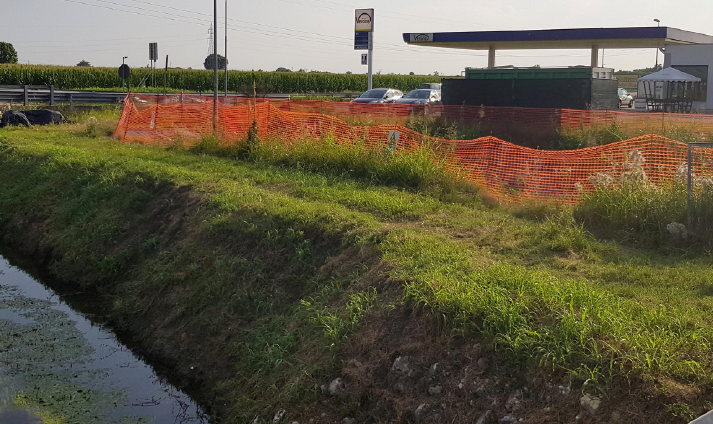
Performance-Based Objectives Achieved at Scott AFB
This case study reviews the Corrective Action Plan (CAP) at Scott Air Force Base, a large military base located in Southwestern Illinois that was contaminated with petroleum impacted soil. One month following the application of PetroFix®, contaminant levels reached non-detect. Benzene continued to remain non-detect through March 2020 and the site was recommended for no further action.
The final CAP Addendum proposed two rounds of groundwater treatment by injection at Former Tank 85 to reduce benzene concentrations below the groundwater remediation objectives. The first round of injections was completed in February through March 2018 and consisted of the use of REGENESIS’ RegenOx®, coupled with ORC Advanced® to stimulate aerobic bioremediation. The initial injection was successful in reducing most contaminants within the affected area. The second round of injections at the former UST was completed in March 2019 using REGENESIS’ PetroFix micron-scale remedial fluid.

Case study highlights:
- Impacted soil was caused by leaking underground piping and removal of two large UST’s
- Second round of direct push injections included PetroFix to treat lingering BTEX
- One month following application of PetroFix, BTEX levels were at non-detect and have continued to remain at that level for 5 sampling events
5m 25s reading time
First Application of PetroFix at Petrol Filling Station in Sweden
Integrated groundwater treatment strategy using RegenOx, ORC-Advanced and PetroFix yields a 98% reduction in groundwater contaminant
concentrations
Introduction
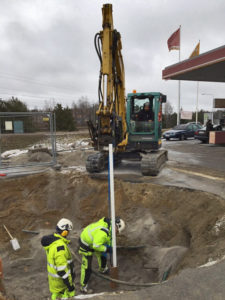
RGS Nordic was asked by Circle K to remediate groundwater contaminated with gasoline at an active Petrol Filling Station (PFS) in Nykvarn, Sweden. During the site investigation, petroleum hydrocarbon contamination was identified within the fill material around the underground storage tank (UST) farm.
RGS Nordic was required to deliver a remediation strategy that posed minimal disruption to the commercial operations of the PFS. The chosen remediation strategy combined targeted excavation, in situ chemical oxidation (ISCO), in situ sorption, and enhanced aerobic biodegradation using a range of complementary REGENESIS technologies: RegenOx®, ORC-Advanced® and PetroFix®.
Case Study Highlights
- The integrated remediation treatment strategy ensured that optimum treatment efficiency was maintained throughout the phases of works, resulting in:
- The amount of excavation and offsite disposal was minimised.
- All underground infrastructure remained in situ.
- All works were completed at an active petrol filling station with minimal disruption to the commercial operations of the facility.
- 12-month period monioring results show reductions of >98% of the gasoline range of petroleum hydrocarbon concentrations in the groundwater.
4m 32s reading time
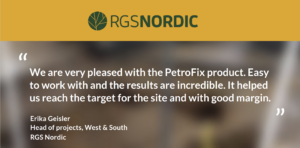
Remediation Products Applied
Please click on the logos below for more product information.
In Situ pilot remediation of gasworks impacted groundwater, Stockholm, Sweden
Introduction
In the north-east of Central Stockholm, a historical industrial site was earmarked for redevelopment. Part of the site comprised a former gasworks, where historical operations have caused a complex mix of contaminants to impact the surrounding soil, groundwater and shoreline sediments.
The large site is due to be redeveloped in a series of parcels including a road, industrial park, residential homes and schools. Remediation is required to ensure the human health risk is removed as part of the restoration of the site. The impacted groundwater also represents an environmental risk and requires treatment. Risk assessments were used to determine that remediation was required to a depth of 20m BGL. The geology of the site is heterogeneous, comprising a shallow made ground, a clay layer and underlying coarse sands.

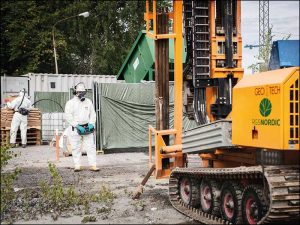
The sands are highly impacted with a range of gas works contamination included creosote NAPLs and high levels of benzene. The saturated clays are also impacted with dissolved phase contamination. Due to contaminants, concentrations and superficial geologies, a range of remedial methods would be required to ensure the most appropriate was used in each scenario. Therefore, RGS Nordic engaged REGENESIS to design a series of pilot tests utilising several in-situ methods. The results from these trials would then be used to shape the full-scale remediation strategy for the entire gasworks site area.
Combined In Situ Remediation Approach and Planning
REGENESIS proposed a pilot-scale combined remediation approach comprising:
- Enhanced desorption using PetroCleanze to target high concentrations of soil-bound contaminants of concern (COC’s) in the sands,
- In Situ Chemical Oxidation (ISCO) using both RegenOx and PersulfOx to target medium to high dissolved phase and soil-bound PAHs in the sandy soil, and
- Enhanced aerobic degradation using ORC-Advanced to target the low dissolved phase benzene and naphthalene concentrations in the clay.
Results
Groundwater samples were collected 3-4 months after the application of REGENESIS remediation products, see graphs 1 to 3. The results are displayed below:
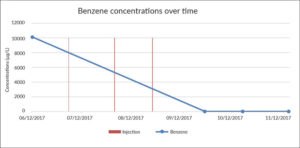
Enhanced Desorption using PetroCleanze
>95% reduction in dissolved phase benzene was achieved with the addition of PetroCleanze. The treatment for PAHs was found to be less effective, primarily due to the low baseline PAH concentrations which were below the optimum treatment concentration range for PetroCleanze.
ISCO using RegenOx and PersulfOx
>90% reduction in dissolved phase benzene and PAHs was observed using PersulfOx. In the RegenOx trial, dissolved benzene concentrations were found to decrease by 80%, while PAH levels increased slightly, potentially due to large volumes of desorbed COCs being released into groundwater post-treatment.
Enhanced Aerobic Biodegradation using ORC-Advanced
A sustained reduction in Naphthalene and benzene (despite suspected influx into the test area) was achieved using ORC-Advanced in the saturated clay.


Conclusion
- A wide range of contaminant concentrations were treated effectively using a combined in-situ remediation approach.
- Substantial reductions in COC concentrations were achieved despite the challenging geological setting.
- The results from the pilot tests show that all areas of the gasworks site can be successfully remediated in-situ using REGENESIS remediation products, providing significant cost savings when compared with conventional techniques
Treatment of site impacted with high levels of petroleum hydrocarbons, Cambridge, UK
Achieving remediation objectives on a busy construction site
Summary
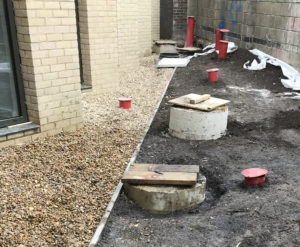
REGENESIS was tasked with the remediation of a former vehicle repair garage impacted with high levels of petroleum hydrocarbons, including some Light Non Aqueous Phase Liquid (LNAPL). Construction of new student accommodation facilities had already commenced on the site when the contamination was discovered. Rapid remediation was needed due to the requirement to complete the construction in time for the start of the new academic year.
The remediation objectives were betterment of the environment through a reduction in LNAPL levels and dissolved phase TPH concentrations. This was to be achieved amongst significant access limitations on the building site and without impacting the construction schedule.
Treatment
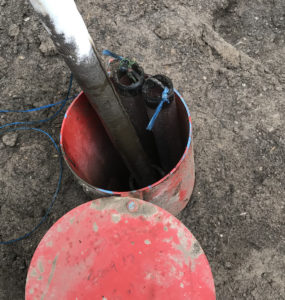 Recoverable LNAPL was removed through skimming via wells drilled at the site boundary. RegenOx was then used to chemically oxidise the residual sheen of free product in the wells. An application of ORC-Advanced was also used to provide a controlled release of dissolved oxygen and enhanced aerobic biological degradation of a proportion of the residual dissolved phase contamination.
Recoverable LNAPL was removed through skimming via wells drilled at the site boundary. RegenOx was then used to chemically oxidise the residual sheen of free product in the wells. An application of ORC-Advanced was also used to provide a controlled release of dissolved oxygen and enhanced aerobic biological degradation of a proportion of the residual dissolved phase contamination.
Following a successful pilot comprising injection of RegenOx into 3 fixed wells: 2 full scale injection campaigns were completed comprising injection of RegenOx and ORC-Advanced into a grid of 19 wells located by the site boundary.
What’s Special?
-
Full-scale injection of RegenOx and ORC-Advanced was completed despite considerable access limitations due to construction works.
-
Remediation objectives were rapidly achieved.
-
The works were completed without impacted the construction project programme, during the latter stages of the site redevelopment.
In Situ treatment of toluene in groundwater, Helsingborg, Sweden
Working with multiple stakeholders to complete chemical oxidation and enhanced aerobic bioremediation works
Summary
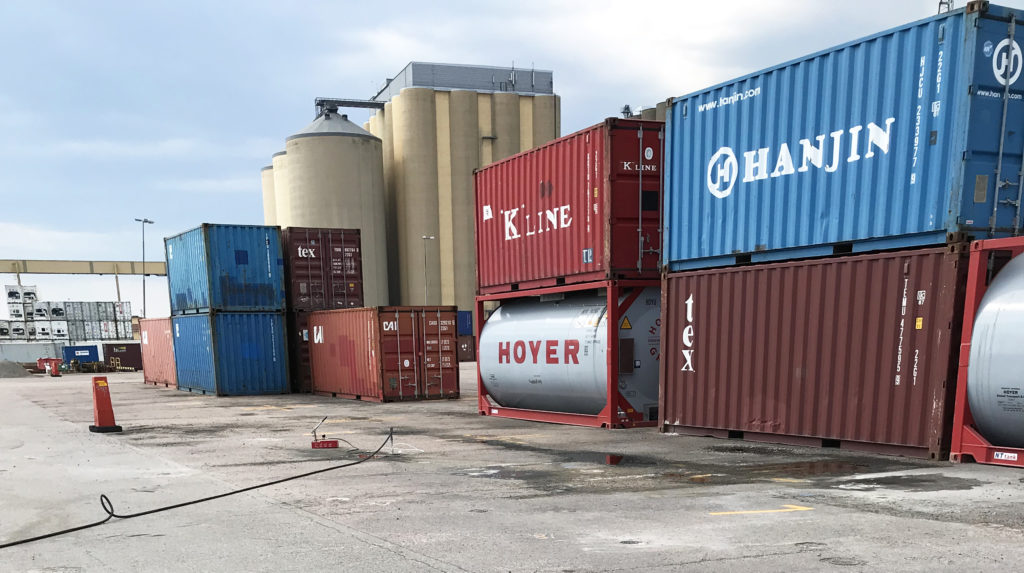
Multiple historic leakages from stored chemicals on an industrial site led to hydrocarbon contamination of the underlying groundwater, predominantly with toluene. Multiple site investigations indicated that the plume had migrated beyond the site boundary and into land owned by the neighbouring harbour authorities. An initial treatment comprised a pump and treat system which had successfully recovered 14m3 of toluene. However, the contaminant concentrations exceeded the legal limits for less sensitive or industrial land use (Swedish MKM values). Therefore, additional remediation phases were required to address the residual dissolved phase. An in situ remedial approach was chosen, using RegenOx and ORC Advanced.
Treatment
Access for the injection works was limited to two areas: one on the original industrial site, and the other in the harbour downgradient. Both areas comprised operation industrial facilities and were separated by a public road and a railway line associated with the harbour.
Initial pilot trials were completed to assess which treatment options would be most effective for the site. The results demonstrated that RegenOx was the most suitable oxidant to address the elevated sorbed-phase and high concentrations of dissolved phase contamination. In the full-scale works, RegenOx was combined with ORC Advanced. ORC Advanced provides a constant supply of dissolved oxygen to enhance aerobic biodegradation, in order to further reduce dissolved phase contaminant concentrations below the target criteria.
What’s Special?
- Pilot trials were used to determine the best remediation options for full-scale works.
- Engagement with multiple stakeholders to complete remediation of a toluene plume extending over several site boundaries.
- In Situ injection works were completed on two separate industrial facilities without disturbance to their operations.
Integrated in situ remediation of honing oil in a chalk aquifer, UK
Summary
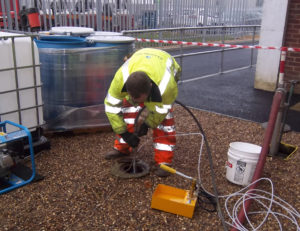
At an active factory, the spillage of ‘honing oil’, a heavy oil used as a lubricant in metal machining, occurred in the oil recovery plant on the side of the main building. The oil infiltrated the vadose zone and entered the groundwater via fractures in the weathered chalk under the site. This resulted in high levels of dissolved phase contamination and some Light Non Aqueous Phase Liquid (LNAPL) on the ground. The contamination posed a potential offsite liability for the site owner and so it was determined that active remediation should be voluntarily completed.
Treatment
REGENESIS employed a sequential remedial approach:
Enhanced vacuum extraction of the LNAPL
- To avoid the installation of a pump and treat system on the busy site, 3 mobilisations of a vacuum tanker was used to provide total fluids removal.
- Recovery was enhanced through multiple injections of PetroCleanze, an inorganic, oxidative surfactant.
- This temporarily promoted rapid desorption of the heavy oils adsorbed to the bedrock within the ‘smear zone’.
- By desorbing this contaminant mass, the vacuum extraction was able to remove more mass, shortening the remedial programme.
- This depleted the contaminant mass on the soils, reducing the potential ‘rebound’ due to desorption.
In Situ Chemical Oxidation (ISCO)
- ISCO was completed at the downgradient edge of the treatment area to target high levels of dissolved phase contamination and prevent egress of any contamination mobilized during the PetroCleanze treatment.
- This was completed using RegenOx, which is alkaline and suitable for use in calcareous formations.
- ISCO was also used across the treatment area following the last enhanced vacuum extraction event, in order to target the residual high levels of dissolved phase contamination prior to bioremediation.
Enhanced Aerobic Biological Degradation
- ORC Advanced was injected with the RegenOx in order to create highly aerobic conditions, increasing the biomass of microbes that would aerobically degrade the residual dissolved phase contamination.
- This single application provides a controlled release of oxygen into the groundwater for up to 12 months.
- This treatment targeted the dissolved phase contamination in the mobile groundwater in the chalk fractures and also provided prevention of rebound due to back-diffusion from the contamination located in the primary porosity of the chalk matrix.
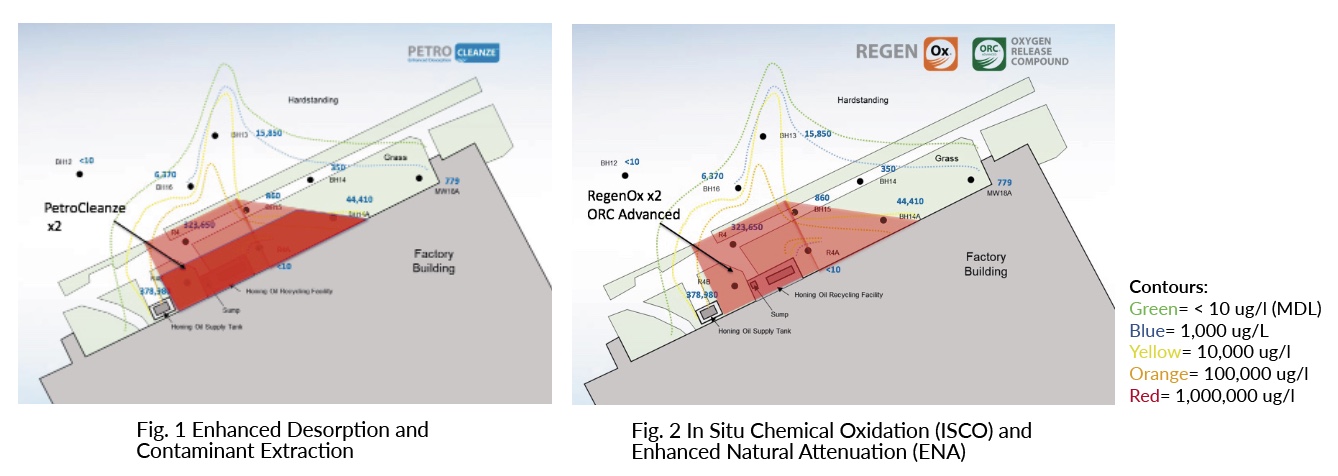
Results
The treatment produced a rapid reduction in the contaminant mass on the site. All LNAPL was removed from the groundwater. Dissolved phase concentrations were reduced by 98% through the combination of treatment processes, see graph 3. The contaminant concentrations remained low and rebound was avoided through the depletion of adsorbed mass and contamination within the immobile porosity.
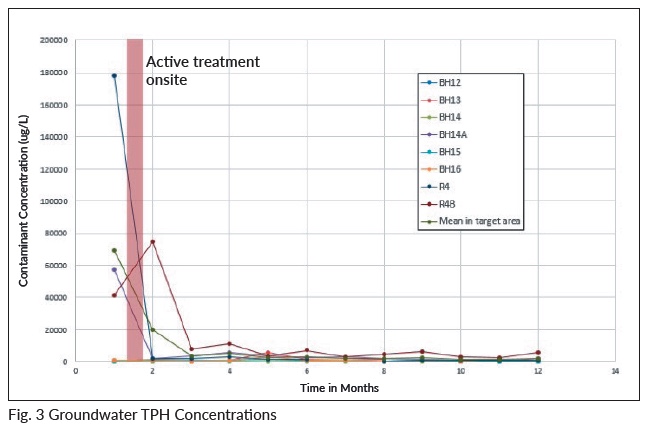
Conclusion
- Enhanced vacuum extraction avoided the installation of abstraction equipment onsite and reduced the treatment programme.
- A combination of approaches targeted each contaminant phase in order to provide the most efficient technique for each level of contamination, from LNAPL to low dissolved phase.
- A rapid and dramatic reduction in the contaminant concentrations was achieved.
- Low concentrations were maintained through the targeting of sources of rebound via desorption and back-diffusion.

 Americas
Americas Europe
Europe Français
Français Deutsch
Deutsch Italiano
Italiano Español
Español
